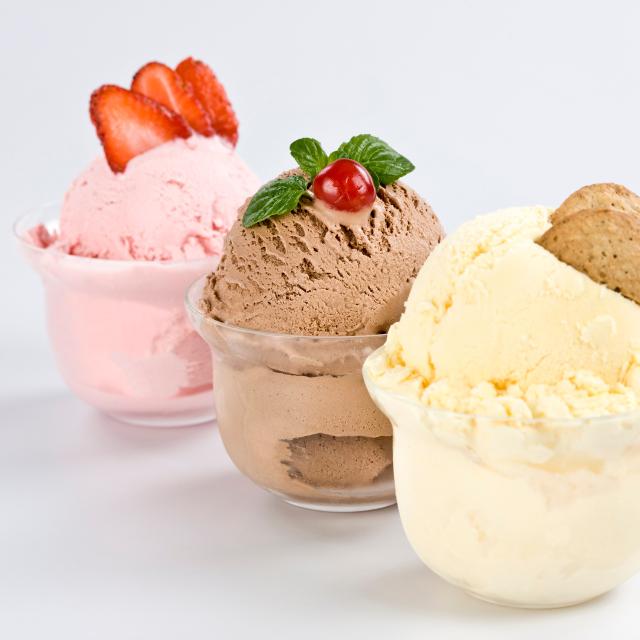
What if you could transform a handful of simple ingredients into a dessert that rivals your favorite ice cream shop? Homemade ice cream is more than just a sweet treat; it’s a canvas for creativity, a lesson in chemistry, and a satisfying accomplishment. Yet, many home cooks find themselves frustrated by icy textures, bland flavors, or laborious processes. The good news is that mastering homemade ice cream is entirely achievable with the right techniques and understanding.
Understanding the Basics: What Makes Ice Cream Creamy?
Get The Latest News!
Don't miss our top stories and need-to-know news everyday in your inbox.
Ice cream’s creamy texture hinges on the delicate balance between fat, sugar, air, and ice crystals. When making ice cream at home, these elements must be managed carefully.
- Fat content: Dairy fat contributes to smoothness and richness. Using heavy cream or a mix of cream and whole milk enhances mouthfeel.
- Sugar: Beyond sweetness, sugar lowers the freezing point, helping prevent large ice crystals.
- Air incorporation: Known as overrun, the air whipped into ice cream gives it lightness. Without proper churning, ice cream can become dense or icy.
- Ice crystals: The size of ice crystals determines texture. Smaller crystals yield smoother ice cream; large ones create an icy, unpleasant mouthfeel.
By controlling these factors, you can significantly improve the quality of your homemade ice cream.
Choosing the Right Ingredients and Equipment
The foundation of excellent ice cream is quality ingredients. Opt for fresh dairy products, real vanilla beans or high-quality extracts, and natural sweeteners if possible. Artificial stabilizers and emulsifiers found in commercial ice cream help texture but can be avoided at home with proper technique.
Regarding equipment, having an ice cream maker is ideal, but it’s not mandatory. There are various methods:
- Manual churners: Require physical effort but offer control.
- Electric ice cream makers: Most home models use a pre-frozen bowl; these are user-friendly and effective.
- No-churn recipes: Use whipped cream and sweetened condensed milk, bypassing the need for churning, but often yield a different texture.
Investing in a good ice cream maker with a well-insulated bowl and a reliable motor can make the process more enjoyable and consistent.
Preparing the Base: Custard vs. Philadelphia Style
Homemade ice cream bases usually fall into two categories:
- Custard-based: Made from egg yolks, cream, and sugar, gently cooked to create a rich, creamy texture. This French-style ice cream tends to be smoother and more stable.
- Philadelphia-style: Uses cream, milk, and sugar without eggs, offering a lighter, less rich result.
Custard bases require careful cooking to avoid curdling, but their silky texture rewards the effort. For example, many classic vanilla ice cream recipes use a custard base, which provides a versatile canvas for mix-ins and flavors.
Tips for Achieving Perfect Texture and Flavor
- Chill the base thoroughly before churning: Warm bases can freeze unevenly, creating large ice crystals. Refrigerate for at least 4 hours or overnight.
- Use stabilizers sparingly: Natural options like gelatin or cornstarch can improve texture without artificial additives.
- Don’t skimp on salt in your ice bath: If using an ice and salt mixture to freeze your ice cream maker’s bowl, salt lowers the freezing point and speeds up freezing.
- Incorporate mix-ins at the right time: Add nuts, chocolate chips, or fruit after the ice cream has partially churned to ensure even distribution.
- Avoid over-churning: Excessive churning can lead to a buttery texture as fat separates.
- Allow ice cream to harden properly: After churning, transfer ice cream to an airtight container and freeze for several hours to firm up.
- Experiment with flavors and textures: Try infusing the base with herbs like basil or spices such as cardamom to elevate your ice cream beyond standard vanilla or chocolate.
Common Pitfalls and How to Avoid Them
- Icy texture: Often caused by insufficient fat, improper chilling, or inadequate churning. Using a custard base and ensuring the mixture is cold can help.
- Too soft or melting quickly: May result from too little fat or over-incorporation of air. Balancing cream and milk content is crucial.
- Grainy or curdled custard: Overheating eggs during cooking can cause this. Cook gently over low heat and stir constantly.
- Ice cream too hard to scoop: Adding a small amount of alcohol (like vodka or liqueurs) lowers freezing point slightly, making scooping easier without affecting flavor markedly.
Enhancing Your Homemade Ice Cream Experience
Beyond technique, presentation and creativity enrich the homemade ice cream journey. Consider pairing your ice cream with complementary desserts such as warm fruit crisps or decadent brownies. Sharing your creations with friends and family can turn a simple dessert into a memorable occasion.
For those interested in nutrition, experimenting with dairy alternatives like coconut milk or almond milk is possible but requires adjustments since these have different fat and water content.
Making homemade ice cream is both a rewarding craft and a scientific process. By understanding the role of ingredients, mastering preparation techniques, and paying attention to texture and flavor, you can consistently produce delightful ice cream that rivals commercial varieties. Whether you prefer the richness of a custard base or the simplicity of Philadelphia style, the journey to perfect homemade ice cream is a delicious adventure worth savoring.
Send your news tips to news@edglentoday.com or on twitter @EdGlenTodayNews

